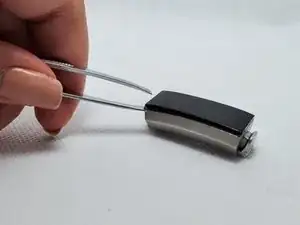
Battery
These are some common tools used to work on this device. You might not need every tool for every procedure.
The Fitbit Alta activity tracker (released in 2016) monitors both sleep patterns and activity (including step count, distance traveled, staircases climbed, etc.). All of these features are presented on the display. The Alta displays notifications, including text messages, phone calls, and calendar alerts, which is an added upgrade from previous Fitbit models. The Fitbit Alta can also be used to set vibrating alarms. Additionally, the Fitbit Alta is water-resistant. This doesn’t mean you should take it on your next scuba diving trip, but it does mean it’s probably OK if it got a little wet in the shower.
The Fitbit Alta pairs with the Fitbit smartphone app, enabling the user to track their health goals, enter competitions with their Fitbit friends, and more. Contrary to the Fitbit Charge and Fitbit Charge HR, the Fitbit Alta has an easily replaceable wristband. Many different colors, styles, and materials for this band are on the market.
The Fitbit Alta HR is a close cousin of the standard Fitbit Alta, with the only difference being an added heart rate monitor. These two variants are almost indistinguishable in structure. One key difference is the Fitbit Alta band has a button strap attachment mechanism, while the Fitbit Alta HR has a buckle strap.
The Fitbit Alta is substantially thinner than previous Fitbit models. Subsequently, the display screen is both narrower and longer than previous models, resulting in a more sleek and modern appeal.
Fitbit Alta 101 Guide from Fitbit